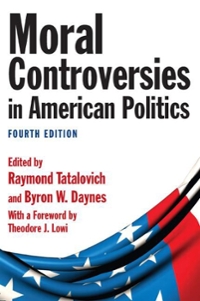Question
In early 2002, Mrs. Smyth's, a Chicago-based food company, initiated an empirical estimation of demand for its gourmet frozen fruit pies. The firm wants to
In early 2002, Mrs. Smyth's, a Chicago-based food company, initiated an empirical estimation of demand for its gourmet frozen fruit pies. The firm wants to formulate pricing and promotional plans for the future on the basis of historical data, and management is interested in learning how pricing and promotional decisions might affect sales. Mrs. Smyth's has been marketing frozen fruit pies for several years, and its market research department has collected quarterly data over two years for six important marketing areas, including unit sales quantity, the retail price charged for the pies, local advertising and promotional expenditures, and the price charged by a major competing brand of frozen pies. Statistical data published by the U.S. Census Bureau on population and disposable income in each of the six market areas were also available for analysis. It was therefore possible to include a wide range of hypothesized demand determinants in an empirical estimation of fruit pie demand. These data appear in the table below.
1. Run one linear regression of the following form using all these data (also available in Excel format on the course website) and report the equation with the estimated coefficients. Qit = b0 + b1Pit + b2Ait + b3PXit + b4Yit + b5Popit + b6Tit The subscript i indicates the regional market from which the observation was taken, whereas the subscript t represents the quarter during which the observation occurred. Where: Q is the quantity of pies sold during the t th quarter P is the retail price in dollars of Mrs. Smyth's frozen pies A represents the dollars spent for advertising; PX is the price, measured in dollars, charged for competing fruit pies Y is dollars of disposable income per capita Pop is the population of the market area T is the trend factor (2000-1 = 1,..., 2001-4 = 8)
1Please interpret each of the coefficients in the regressions results. For each coefficient, discuss both the sign as well as its magnitude (e.g., if we were to increase X by Z units, the variable Y would increase/decrease by ...).
3. Can you explain intuitively the meaning of the coefficient of determination (R2) for the Mrs. Smyth's frozen fruit pie demand equation. Does it suggest that demand is mostly predictable or unpredictable?
4. Use the results from question 1 to estimate 2002-1 unit sales in the Washington, DCBaltimore, MD, market under the following assumptions: a. P = $7.20 b. A = $30,000 c. PX = $6.00 d. Y = $43,000 e. Pop: Same as in prior period
5. Using the regression output, please estimate the demand elasticity under the above conditions (e.g., P = $7.20, A = $30,000, ...). Use whatever elasticity formula you prefer (for most people, it's easier to use the point elasticity).
6. Use the formula for marginal revenues as a function of the price elasticity. Calculate marginal revenue under the above conditions (price of $7.20, ...).
7. Based on the answer to the previous item (i.e., marginal revenues), can you say whether the price of $7.20 is profit-maximizing? If more information is needed, explain why.
Step by Step Solution
There are 3 Steps involved in it
Step: 1

Get Instant Access to Expert-Tailored Solutions
See step-by-step solutions with expert insights and AI powered tools for academic success
Step: 2

Step: 3

Ace Your Homework with AI
Get the answers you need in no time with our AI-driven, step-by-step assistance
Get Started


